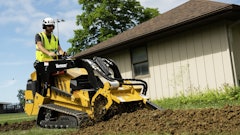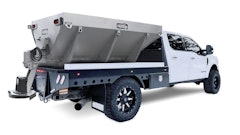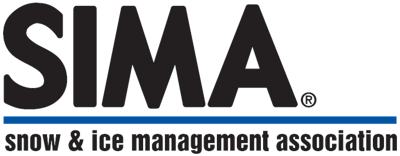
The last five years have been a rollercoaster ride for snow management and removal professionals. Several years of heavy snow in many areas were followed by a severe low snow season in 2011/2012 in many regions, and the past season saw some major swings in temperatures and some bewildering weather events. From this pattern emerged some complicated and impactful winter weather, including Nemo and Saturn, each creating major challenges for snow professionals, the economy, and the public at large.
In the Eastern US, we saw Hurricane Sandy followed immediately by a major winter storm, creating a nightmare scenario for everyone involved. Snow contractors there were charged with fighting through the damage of Sandy, the disarray of post-Sandy cleanup, and the lack of available fuel and materials to service their clients.
Even though the season started off strongly, it seemingly weakened through the holidays and early part of 2013. In February, Winter Storm Nemo pounded the Northeast, representing once again that the ‘storm of the century’ essentially hits the US every few years. According to The Weather Channel, Nemo dumped 40 inches in portions of Connecticut, and took the spot as the 5th heaviest snow in the Boston area in history. Even after these major storms, winter persisted for an unseasonably long time in areas like Minnesota.
This past winter was also the first season after The Weather Channel announced its snow storm naming system. SIMA and many industry professionals have embraced this concept, and already the terms ‘Nemo’ and ‘Saturn’ are used in reference to these extremely impactful winter events; finally, the public has a naming system that helps identify storms that are as powerful and potentially impactful as hurricanes and other major weather events.
Looking to the Future
As snow and ice continue to impact the US and Canada each season, there is an increased need for snow professionals to become more efficient and better trained in the work that they do. As the professional snow industry matures, more focus will be placed on expertise, efficiency, and training. There are a number of driving factors that will help professionals in snow management continue to grow as businesses and service providers, including:
Risk and Legal Drivers
The liability of having snow and ice on site has steadily increased for facilities and property management professionals over time. This in turn has led to a trend in recent years to push some or all of that liability onto the snow service provider, especially toward contractors and subcontractors performing the work. The trend has also seen the rise of large national and regional service companies who manage major contracts and work with local service providers to perform services. Snow professionals in this risky climate must continue to negotiate proactively when signing contracts with any party, but they also must build their businesses to assume some allocation of liability on a site. One good example; a recent slip and fall liability claim rendered a $4 million lawsuit in favor of the plaintiff, who had been disabled after slipping and falling near her home. The managing agent of the housing community was held liable for 75% of the liability, while the snow contractor received 25% of the fault. This is an example of a situation where negligence was found, and a dramatic injury occurred. But unfortunately, there are too many other lawsuits brought and settled every winter that are not as balanced; these are incidents that are systematically run through the judicial system, leveraging an extended statute of limitations in many cases, and with claims that are strategically set at a monetary level that leave insurance companies no choice but to settle vs. spend more money defending appropriate service.
Snow management professionals will only be able to navigate this challenging risk environment by signing sound contracts that help to protect them, adhering strongly to scope of work, insuring themselves with snow-specific insurance programs, implementing a quality documentation of services protocol, and training operations personnel on safety and efficiency best practices.
Environmental Drivers
The birth and growth of the ‘green’ industry movement has shown some exponential rises in the number of facilities and properties that see energy savings and marketable advantages to being ‘green’ or ‘sustainable’. The best example of this is the LEED certification program through the US Greens Building Council. This trend will continue to grow, and snow and ice management can play a critical role in managing the balance between public safety, liability, and sound environmental concerns. The more snow professionals can become experts in utilizing various equipment types, technologies, and deicing/anti-icing products, the better they will be positioned to use this trend as a differentiator for their businesses long term.
Regulatory Drivers
There are multiple issues coming into play in 2013/2014 that could impact snow management professionals. First, the initial foray into the Affordable Care and Patient Protection Act (aka Obamacare) will occur starting in January of 2014. A key provision in the law will foster some additional scrutiny for small businesses related to the definition of a ‘full time’ worker. Many snow and land care professionals will need to educate themselves and prepare their companies and their employees for some fairly dramatic changes in the way health care services are purchased in the US.
Another potential focus that could impact the snow industry is tied to potential Immigration Reform. Although there is the chance that nothing will occur, there is an equal chance that some legislation will be passed. Hiring legal, documented workers is a priority for everyone, but often difficult because there is a fine line between authenticating the paperwork for identification and being too aggressive in the procedure, which can lead to discrimination charges. SIMA will support legislation that provides an acceptable mechanism for legalizing improperly documented workers or legislation that gives employers access to a steady workforce of seasonal, fulltime guest workers, provided that employers are granted the opportunity to gradually replace a worker who is found to be improperly documented. Such legislation must not eliminate the current H-2B program or place undue economic burdens on employers.
Efficiency Drivers
As the snow removal industry has matured, so has the development of equipment and tools to do the work. Ten years ago, there were a few major types of plows on the market in the US. Now, there are dozens of specialty plow types, multiple new entities with innovative plow technologies, and increased innovation from long-time manufacturers of plows and other snow-specific tools. As the need for cost effective, competent snow management continues to grow, snow professionals will need to invest in and utilize multiple tools to conduct specific aspects of the work. Examples include: sectional ‘pushers’ with moving edges or trip edges for bulk snow removal, advanced GPS technologies and guidance systems for plows and spreaders, multi-use tools that can accomplish different tasks (such as bulk pushing and detail work) with limited down time, powerful snow blowers for larger equipment, specialized sidewalk spreaders and tractors, and increased usage of versatile equipment such as skid steers and multi-purpose utility vehicles.
The Big Picture
As the demand for responsive, cost effective snow management services grows, the industry will continue to evolve to meet changing demands. The pressures and drivers above will help to shape the services provided, and in general make snow removal a more professional, responsive, and essential service.
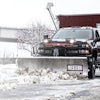
![Gravely Pro Turn Mach One My23 Dsc03139 Edit 1200x800 5b2df79[1]](https://img.greenindustrypros.com/mindful/acbm/workspaces/default/uploads/2025/10/gravely-pro-turn-mach-one-my23-dsc03139-edit-1200x800-5b2df791.BucBnDoN22.jpg?auto=format%2Ccompress&fit=crop&h=100&q=70&w=100)


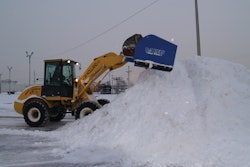
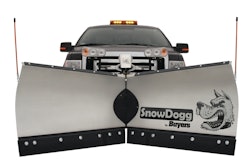
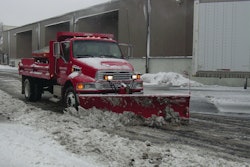

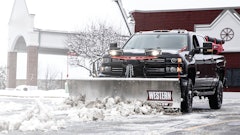
![Gravely Pro Turn Mach One My23 Dsc03139 Edit 1200x800 5b2df79[1]](https://img.greenindustrypros.com/mindful/acbm/workspaces/default/uploads/2025/10/gravely-pro-turn-mach-one-my23-dsc03139-edit-1200x800-5b2df791.BucBnDoN22.jpg?ar=16%3A9&auto=format%2Ccompress&fit=crop&h=135&q=70&w=240)
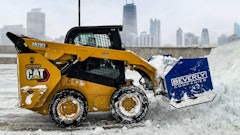

![Kubota Snow ah3 Sgv25ua[1]](https://img.greenindustrypros.com/mindful/acbm/workspaces/default/uploads/2025/10/kubota-snowah3sgv25ua1.bAUoUSziui.png?ar=16%3A9&auto=format%2Ccompress&bg=fff&fill-color=fff&fit=fill&h=135&q=70&w=240)



